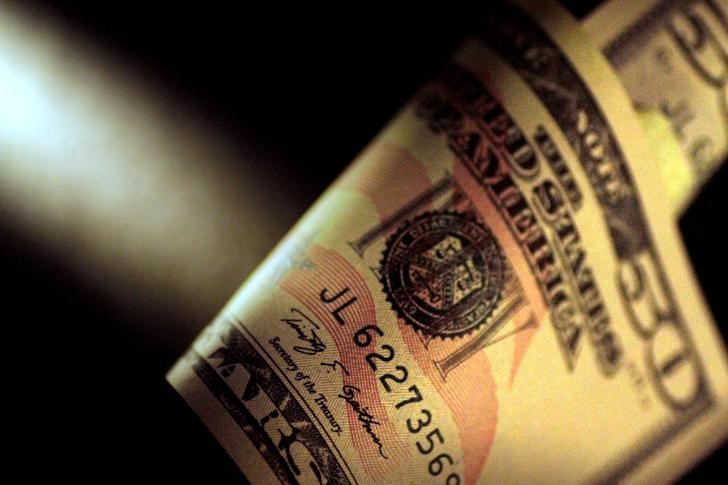By Gina Lee
Investing.com – The dollar was down on Friday morning and was set for the worst week in nearly two years, as the Bank of England (BOE) and European Central Bank (ECB) tightened their monetary policies.
The U.S. Dollar Index that tracks the greenback against a basket of other currencies edged down 0.19% to 95.19 by 10:31 PM ET (3:31 AM GMT), falling to a three-week low.
This came after the dollar's gains during the previous week, with investors bracing for faster-than-expected interest rate hikes from the U.S. Federal Reserve. The Fed took a hawkish stance of its own as it handed down its policy decision earlier in the month.
"On the face of it, both the BOE and ECB met market expectations, with BOE raising rates 25bps to 0.50% and ECB keeping policy unchanged. However, both meetings unveiled substantial hawkish shifts," Westpac analysts said in a note.
The USD/JPY pair inched down 0.01% to 114.93. Analysts expect that the Bank of Japan might follow its peers to tighten monetary policy when it hands down its policy decision in the following week.
The AUD/USD pair inched up 0.04% to 0.7143. Although the Reserve Bank of Australia foresees faster inflation, the central bank said it will keep a dovish policy as it looks to continue recovery in wages and living standards.
The NZD/USD pair was up 0.27% to 0.6676.
The USD/CNY pair stay unchanged at 6.3610, with Chinese markets still closed for the Lunar New Year holidays.
The GBP/USD pair edged up 0.12% to 1.3611. The BOE handed down its policy decision on Thursday, with nearly half of its policymakers preferring a bigger hike to curb high inflation.
The euro reached its highest since January 14, 2021. ECB president Christine Lagarde said it is unlikely to continue increasing interest rates due to growing inflation risks.
"It’s not unreasonable to conclude that the peak of the Fed-ECB policy divergence is past us," ING analysts told Reuters. They added the previous week's low for the euro possibly marked its bottom in this cycle as the market moves had been driven by the different policy stances of the two central banks.
On the data front, investors await the latest U.S. jobs report, including non-farm payrolls, due later in the day.
